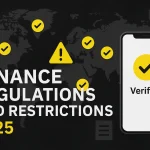If you’ve been asking “What is Coinbase Wrapped BTC(CBBTC)” and why it matters for Bitcoin on Layer 2, you’re in the right place. This guide walks through how cbBTC works, why builders and traders care, what risks you should weigh, and practical steps to put wrapped BTC to work in DeFi on the Base network.
Quick note: You’ll often see the token styled as cbBTC. Some articles write CBBTC in all caps. We’ll use cbBTC for the asset while preserving the focus keyword “What is Coinbase Wrapped BTC(CBBTC)” for clarity and SEO.
The short answer
- Coinbase Wrapped BTC (cbBTC) is a token on EVM chains that represents Bitcoin 1:1, with BTC held in custody by Coinbase. 1 cbBTC is intended to be redeemable for 1 BTC (minus fees) via eligible channels.
- cbBTC is designed to make Bitcoin usable in EVM DeFi: lending, liquidity provision, yield strategies, payments, and onchain settlement—especially on Base, an Ethereum Layer 2 incubated by Coinbase.
- Like all custodial wrapped assets, cbBTC trades technical friction for counterparty risk. You gain speed and composability on Base while relying on Coinbase to hold reserves and process redemptions.
What exactly is wrapped BTC and why cbBTC
Wrapped Bitcoin is a token on EVM-compatible networks that mirrors BTC’s value. Because Bitcoin doesn’t run the EVM, it can’t plug directly into smart contracts on Ethereum or Base. Wrapping solves that by locking BTC with a custodian or protocol and issuing an EVM token that tracks the Bitcoin 1:1.
Where cbBTC fits:
– Custodian: Coinbase acts as the centralized custodian of the BTC backing cbBTC.
– Chain focus: Launched with a strong emphasis on the Base ecosystem to make Bitcoin capital efficient in fast, low-fee DeFi.
– Design goal: A simple, institution-friendly path for BTC holders to access EVM DeFi without giving up the familiarity of Coinbase custody and compliance.
If you’ve used WBTC before, the concept is similar—wBTC is custodied by BitGo with a network of merchants. cbBTC pulls the same idea under the Coinbase brand and Base’s L2 user experience.
How cbBTC works in plain English
- BTC is deposited with Coinbase via supported rails and custody workflows.
- Coinbase mints cbBTC on Base (and where supported) 1:1 against reserved BTC.
- cbBTC can be transferred across wallets and integrated with DeFi protocols on Base like DEXs, lending markets, and payment apps.
- To redeem, users or institutional partners burn cbBTC and receive BTC back on Bitcoin, subject to eligibility and fees.
Key properties:
– 1:1 peg intention: Value tracks BTC closely due to redemption and arbitrage.
– EVM-native composability: cbBTC behaves like any ERC-20 style token where it’s deployed, enabling swaps, collateralization, and smart-contract logic.
– Faster settlement: On Base, transactions finalize seconds fast with low fees, unlike native Bitcoin L1 settlement times and costs.
Why builders and traders care
- Liquidity for Bitcoin on Base: Bring BTC’s deep market cap into DeFi primitives—swaps, perps collateral, yield strategies, collateralized loans.
- Lower friction vs. cross-chain bridges: Using cbBTC avoids bespoke bridge risk between Bitcoin and EVM; the custodian handles the lock-and-mint process.
- Better UX for Bitcoin users: Keep BTC exposure while participating in EVM dapps.
Example use cases:
– Provide cbBTC liquidity on a Base DEX to earn trading fees and incentives.
– Use cbBTC as collateral to borrow stablecoins for hedging or yield strategies.
– Settle payments on Base in cbBTC for faster, cheaper onchain transfers than BTC L1.
Minting, redeeming, and fees
- Minting: Typically requires sending BTC to Coinbase custody through supported flows. Retail access and region availability can vary; institutions often get direct channels.
- Secondary market: Most users acquire cbBTC by swapping on a Base DEX or aggregator. This is the fastest route for smaller amounts.
- Redeeming: Burning cbBTC to receive BTC on Bitcoin is handled through Coinbase’s redemption process where available.
- Fees: Expect network gas on Base, potential mint/redeem fees, and DEX swap fees. Slippage may apply in low-liquidity pools.
Tip: For small sizes, a DEX swap might be cheaper and instant. For large sizes, minting/redemption can reduce slippage but adds operational steps.
Security, reserves, and transparency
- Custodial model: cbBTC’s security model depends on Coinbase’s custody, compliance, and operational controls. This differs from decentralized bridges and from Bitcoin self-custody.
- Reserves: Wrapped assets should always be backed 1:1 by on-custody BTC. Verify proof-of-reserves or transparency reports published by the issuer. Coinbase has a track record of public company reporting and risk management; still, read the latest disclosures and audits.
- Smart contracts: Even if custody is centralized, the onchain token contract can have upgrade controls or pausing abilities. Review docs and contract addresses before deploying capital.
Risk profile to understand:
– Counterparty risk: Coinbase must safeguard BTC and honor redemptions.
– Contract risk: Token or protocol integrations could have bugs.
– Market risk: Peg can deviate temporarily if secondary liquidity is thin or during market stress.
cbBTC vs WBTC vs tBTC at a glance
- cbBTC: Centralized custodian Coinbase; strong Base-native focus; potential advantages for institutions and retail already using Coinbase’s ecosystem.
- WBTC: Centralized custodian BitGo with merchant network; the most battle-tested liquidity on Ethereum mainnet and several L2s.
- tBTC: Decentralized, permissionless mint via Threshold; stronger trust minimization but historically lower liquidity and more complex mechanisms.
Which should you use?
– Pick based on your trust model, liquidity needs, and target chain. If you’re building or trading primarily on Base, cbBTC can offer smoother UX and integrations.
Wallets, gas, and chain specifics
- Network: Base is an Ethereum L2. You’ll pay gas in ETH on Base, not in BTC.
- Wallets: Any EVM wallet that supports Base—e.g., Coinbase Wallet, MetaMask—should work. Add Base RPC if it’s not preloaded.
- Funding gas: Bridge or buy a small amount of ETH on Base to cover transactions before interacting with cbBTC.
Onchain integrations to watch
While integrations evolve quickly, common patterns include:
– DEXs and aggregators on Base for cbBTC swaps and liquidity pools.
– Money markets for borrowing against cbBTC.
– Yield routers that combine cbBTC with stablecoin strategies.
– Payment rails that accept cbBTC for faster settlement.
Always verify token contract addresses from official sources to avoid imposters.
How to get started step by step
- Set up a Base-ready wallet: Install Coinbase Wallet or MetaMask and add the Base network.
- Get Base gas: Acquire a small amount of ETH on Base via a bridge or a supported on-ramp.
- Acquire BTC: Buy BTC on a reputable exchange. If you need an on-ramp with fee savings, see the offer below.
- Choose your path to cbBTC:
- Swap on Base via a DEX/aggregator to get cbBTC instantly.
- Explore Coinbase’s official minting/redemption channels if you want primary market access and meet eligibility.
- Put cbBTC to work: Provide liquidity, use as collateral, or integrate into your app on Base.
- Track risk and liquidity: Monitor pool depth, spreads, and any issuer transparency updates.
Exclusive offer for readers
Looking for a low-friction on-ramp before you mint or swap cbBTC?
- Register with Join Binance with code CRYPTONEWER for 20% fee discount and $10,000 benefits. After you buy BTC or stablecoins there, you can move funds to your Base wallet to mint or swap into cbBTC. Terms, conditions, and regional availability apply.
This can reduce trading costs when building your initial position, especially if you plan to ladder into cbBTC liquidity over time.
Practical tips for safer usage
- Verify contracts: Only interact with the official cbBTC contract on Base; check issuer documentation.
- Avoid thin pools: For large swaps, route across multiple pools or consider primary minting to reduce slippage.
- Use hardware wallets: For sizable positions, sign with a hardware wallet and segregate hot/cold funds.
- Track peg and liquidity: Watch cbBTC-BTC price and pool depth during market volatility.
- Understand tax implications: Wrapping, swapping, and yield may be taxable in your jurisdiction.
Frequently asked questions
Q: Is cbBTC decentralized?
A: No. cbBTC follows a custodial model where Coinbase holds the BTC reserves. This is a deliberate tradeoff to simplify user experience and institutional compliance.
Q: Where does cbBTC live?
A: cbBTC is active on EVM chains where it’s deployed, with a strong focus on the Base ecosystem. Always confirm the chain and contract from official sources.
Q: How do I redeem cbBTC for BTC?
A: Redemption is typically done through Coinbase’s supported channels. Eligibility depends on region, KYC/AML status, and product availability. Secondary-market selling (DEX swap) is a common alternative for quick exits.
Q: Is cbBTC the same as WBTC?
A: Both are 1:1 custodial wrapped BTC tokens but have different custodians, histories, and liquidity footprints. Choose based on the chain you use, trust preferences, and available liquidity.
Q: What risks should I consider?
A: Counterparty risk (custody), smart contract risk, peg/liquidity risk, and general market volatility. Diversify across venues and understand the issuer’s transparency.
Builder checklist for integrating cbBTC on Base
- Confirm canonical token address from Coinbase documentation.
- Implement safe allowances, re-entrancy guards, and robust oracle design.
- Account for Base gas patterns and batches for user cost optimization.
- Provide clear UI indicators for peg health and slippage.
- Offer educational tooltips on risks, redemption, and custody model.
Final thoughts for power users
- If you’re deep in Base DeFi, cbBTC can unlock BTC’s idle capital. Combine it with lending, LPing, and structured strategies to shape your risk/return profile.
- Institutions may prefer cbBTC for custodial clarity and auditability. Retail may prefer it for the Coinbase UX and Base performance.
- Keep a close eye on proof-of-reserve disclosures, contract upgrades, and liquidity expansions as the ecosystem grows.
Not financial advice. Crypto assets are volatile and can lose value. Do your own research and consult a professional if needed.





